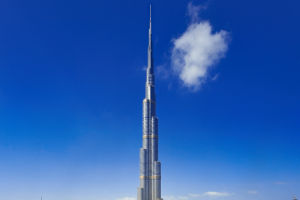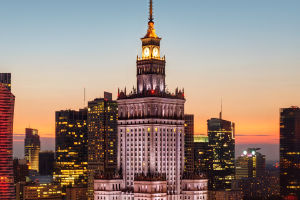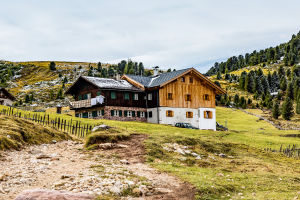Lykkers, have you have ever been in love with a city? What if we give you a full region to fall in love with? Tuscany, with its timeless beauty, has captivated visitors for centuries.
From the rolling hills and vast valleys to the pristine coastline, this enchanting region offers something for every traveler.
Throughout the year, Tuscany’s landscape transforms, from the sunny yellow fields of summer, often dotted with sunflowers, to the warm, romantic hues of autumn foliage. This guide takes you on a journey through the scenic villages and unique historical landmarks that define this celebrated region.
Florence: A Must-Visit Gateway to Tuscany
No visit to Tuscany is complete without exploring Florence, the birthplace of the Renaissance. The city is brimming with art, culture, and history. Spend a couple of days admiring iconic sights such as the Uffizi Gallery, Ponte Vecchio, and the Florence Cathedral. Once the cultural soul is satisfied, you’ll be ready to continue exploring the Tuscan countryside, with its charming villages and stunning landscapes.
How to Get There: Florence is easily accessible by train from major cities in Italy, including Rome and Milan, with a central station located near the city center. For those traveling by car, the city is connected to other regions via the A1 highway.
What to See: Florence is brimming with art and history. Must-see attractions include the Uffizi Gallery, housing works by Botticelli and Leonardo da Vinci, and the Duomo, the city’s iconic cathedral. The Accademia Gallery, home to Michelangelo’s "David," is another cultural highlight.
Siena: A City of Tradition and Beauty
From Monteriggioni, head toward Siena, a city that has preserved its historical charm. Known for the famous Palio horse race, Siena’s medieval streets and stunning Piazza del Campo make it a must-see destination. With its rich cultural heritage, Siena offers a blend of art, architecture, and local traditions that showcase the essence of Tuscany.
How to Get There: Siena can be reached by bus or train from Florence or other major cities in Tuscany. The central train station, Stazione di Siena, is about 10 minutes from the city center.
What to See: Siena is famous for its Piazza del Campo, home to the annual Palio horse race. Other must-see attractions include the Siena Cathedral and the Museo Civico, which houses art from the Sienese School.
Capalbio: A Blend of History and Beauty
Perched on a hill overlooking the Tyrrhenian Sea, Capalbio is a small town rich in history. With roots dating back to the Etruscan era and remnants of Roman and Renaissance architecture, Capalbio is often referred to as the “Little Athens” due to its popularity among intellectuals. Its charming old town is a perfect place to explore on foot.
How to Get There: Capalbio is situated about 130 kilometers from Florence and can be reached by car or bus. Public transportation services are available from Grosseto and Orbetello.
What to See: This charming hilltop village offers stunning views of the Tuscan coastline. Visit the medieval Rocca Aldobrandesca for panoramic vistas, and explore the town's narrow streets lined with ancient buildings.
Porto Ercole: A Seaside Retreat
Located on the Argentario Peninsula, Porto Ercole is a picturesque seaside village surrounded by natural harbors and cliffs. Known for its glamorous atmosphere and vibrant nightlife, it’s an ideal spot for a romantic evening by the sea. Enjoy a meal at one of the local restaurants or take a leisurely stroll through the charming streets.
How to Get There: Porto Ercole is located on the southern coast of Tuscany, about 150 kilometers from Florence. It can be reached by car via the SS1 highway, and buses from Orbetello and Grosseto connect the town to larger cities.
What to See: Porto Ercole is a picturesque seaside village with a rich history. Visit the Forte Stella, a 16th-century fortress offering breathtaking views of the Mediterranean Sea. Explore the quaint harbor and take a boat trip to see the beautiful coves nearby.
Castiglione della Pescaia: A Coastal Paradise
Further along the coast, Castiglione della Pescaia offers a rich historical and cultural experience. This coastal gem was once a thriving port, and visitors can explore monuments such as the Red House Ximenes, the Palazzo del Pretorio, and Santa Maria del Giglio. The village’s vibrant atmosphere and stunning beach make it a perfect stop for those seeking both history and relaxation.
How to Get There: Castiglione della Pescaia is located about 40 kilometers south of Grosseto, and can be reached by car via the SS1 highway. There are also bus connections from Grosseto.
What to See: Castiglione della Pescaia is a charming coastal village with beautiful beaches. The Castello di Castiglione della Pescaia, a medieval castle perched above the town, offers panoramic views of the coast. The town’s old center is full of narrow streets and lovely shops, and the natural reserve of Diaccia Botrona is perfect for birdwatching.
Castagneto Carducci: A Village Steeped in Tradition
Nestled among the hills of the Etruscan Coast, Castagneto Carducci is a charming village known for its connection to the famous poet Giosuè Carducci. The village’s medieval architecture, combined with the surrounding vineyards, creates a tranquil atmosphere that reflects the region’s rich history and natural beauty.
How to Get There: Castagneto Carducci is located about 100 kilometers from Florence, easily accessible by car via the A12 highway. The town is also served by a train station with connections to other Tuscan cities.
What to See: Castagneto Carducci is famous for being the hometown of the poet Giosué Carducci. Visit the Museo Carducci, dedicated to the poet's life and works. Wander through the charming streets of the village and explore the nearby vineyards. The medieval Castello di Castagneto, with its stunning views over the surrounding hills, is a must-visit.
San Gimignano: The Medieval Skyline
Renowned for its medieval towers, San Gimignano is one of the most iconic villages in Tuscany. Often called the “Manhattan of the Middle Ages,” this UNESCO World Heritage site is famous for its well-preserved medieval architecture. The village’s towers, once symbols of wealth and power, still dominate the skyline, offering a glimpse into the region’s rich history.
How to Get There: San Gimignano is located about 50 kilometers from Florence and can be reached by bus or car. The town is also served by a train station with connections to other Tuscan cities.
What to See: San Gimignano is renowned for its medieval towers, with 13 still standing today. Visit the Collegiate Building of Santa Maria Assunta and explore the town's charming shops and art galleries.
Impruneta: A Land of Terracotta
Impruneta, located just outside Florence, is famous for its high-quality terracotta production. The region has a long history of creating durable and vibrant terracotta products, many of which are exported worldwide. Visitors can explore the local workshops and learn about the ancient techniques still in use today.
How to Get There: Impruneta is located about 12 kilometers south of Florence, easily accessible by car via the SR222. Public buses from Florence also connect the town to the city center.
What to See: Impruneta is famous for its terracotta production, and the Museo del Terracotta offers fascinating insights into this art form. Visit the Basilica di Santa Maria, known for its beautiful terracotta works, and take a walk around the charming town center. The surrounding vineyards and olive groves provide a peaceful escape into nature.
Conclusion
Tuscany is a land of endless beauty, where each village offers its own unique charm and history. From the art-filled streets of Florence to the tranquil countryside and coastal villages, the region is a journey through time and nature. Whether exploring ancient hilltop towns, savoring local flavors, or simply enjoying the stunning landscapes, Tuscany never fails to leave a lasting impression.


